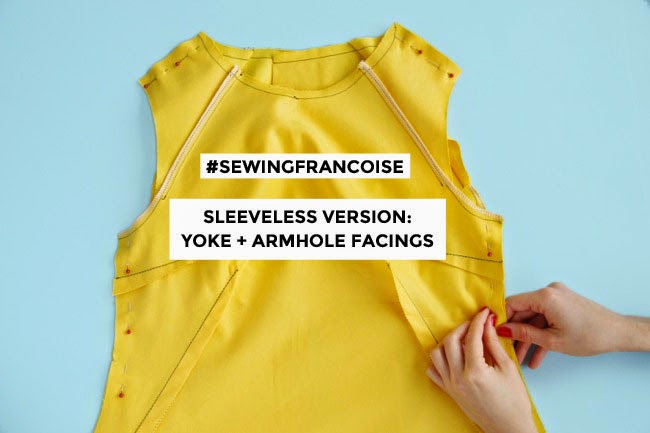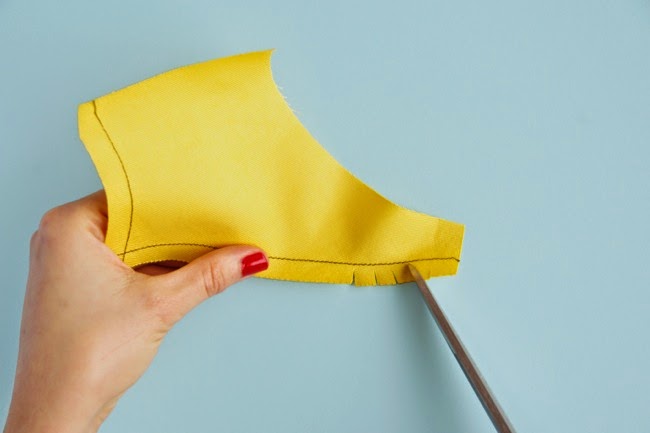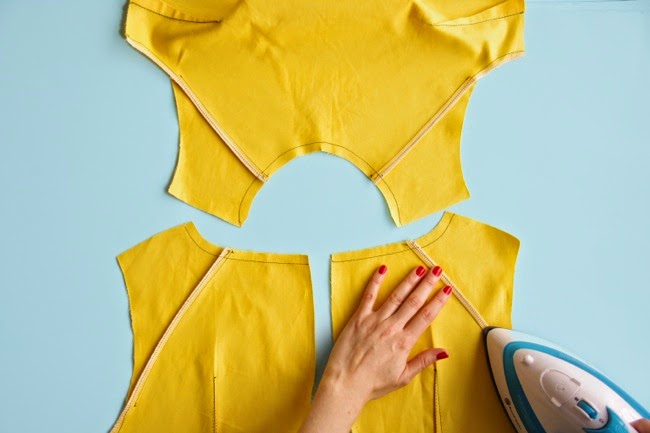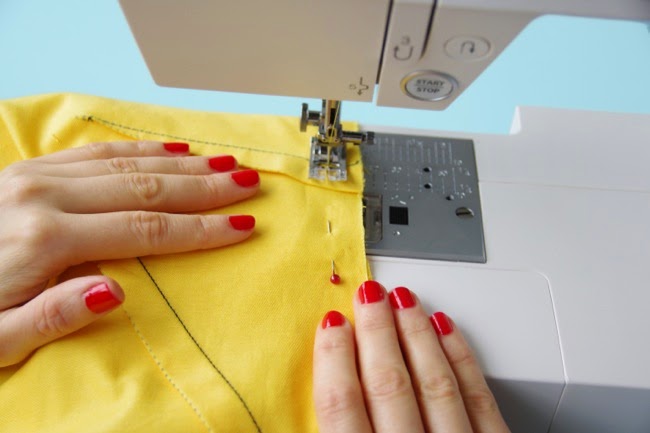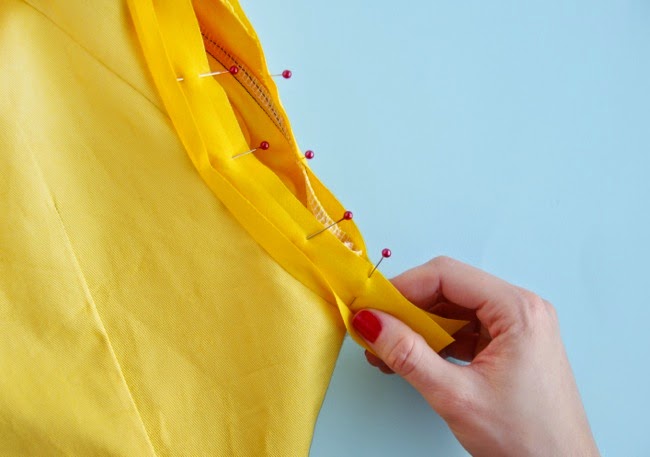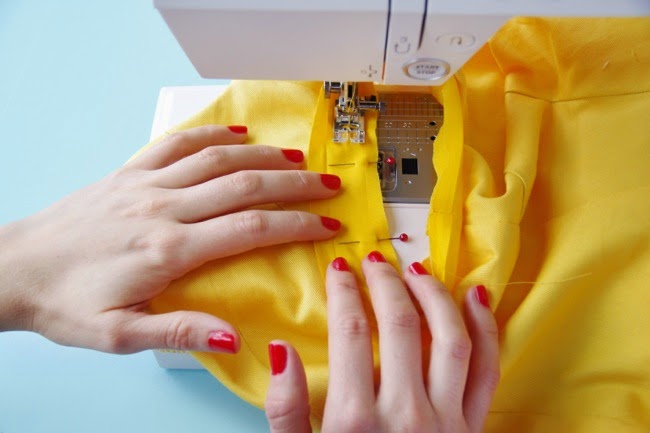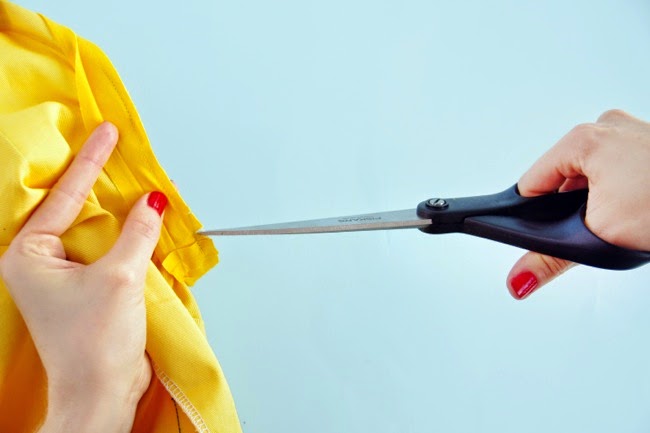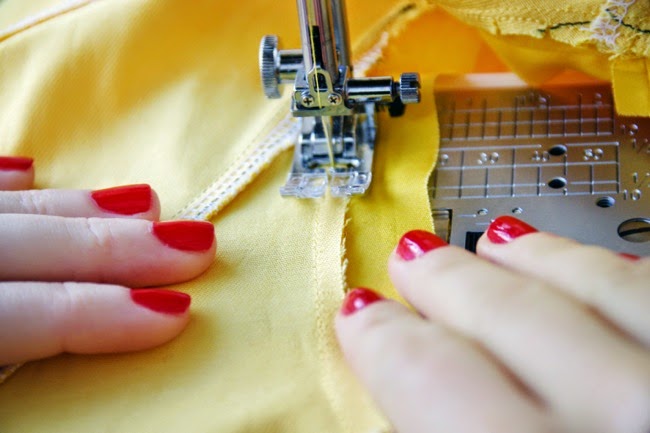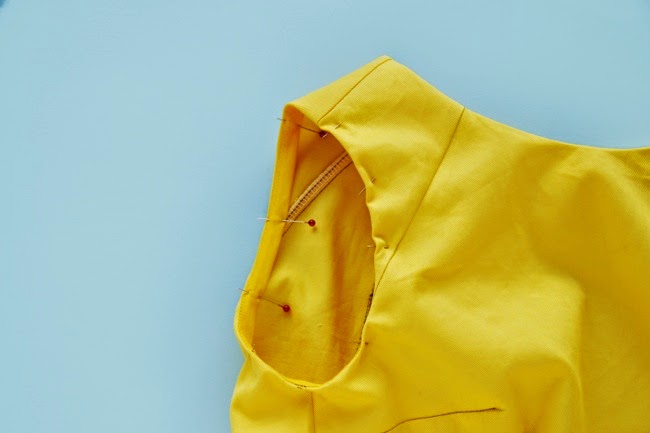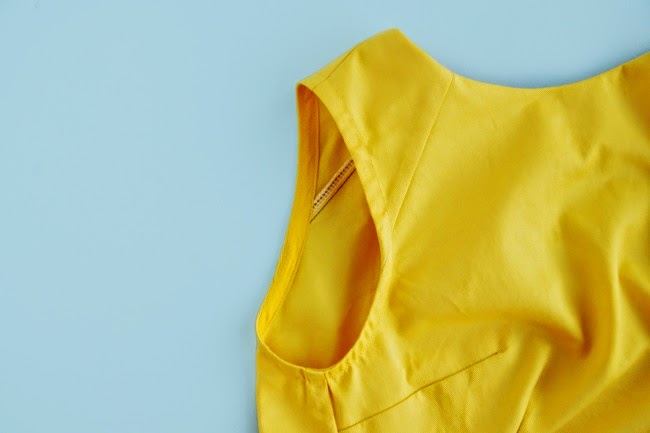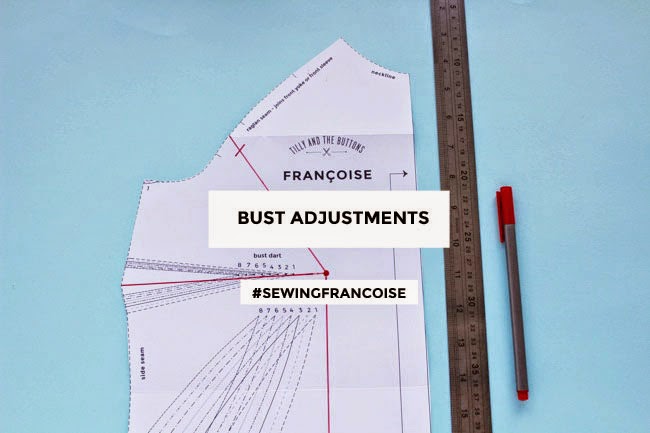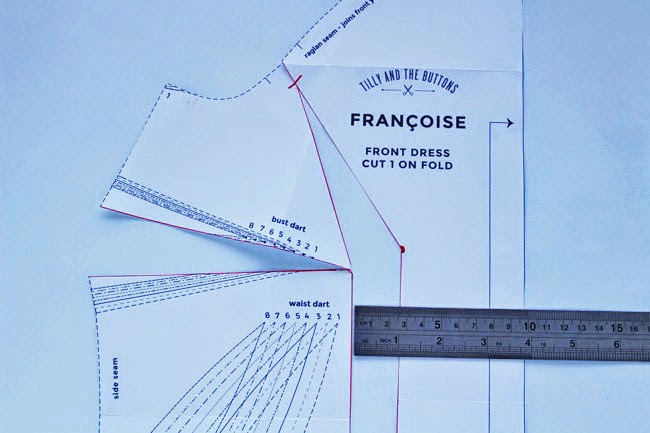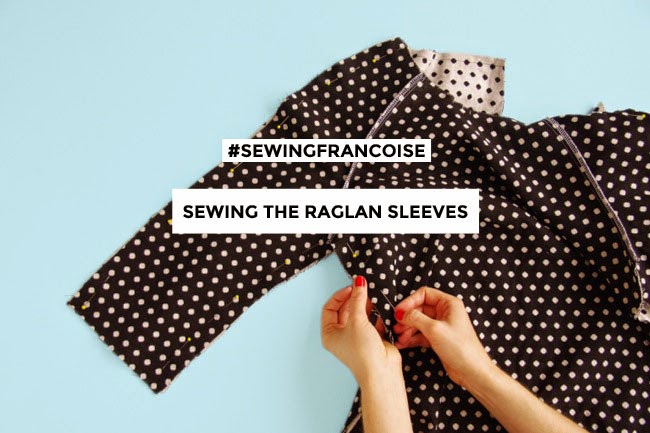
Sewing the Francoise dress? Today I’m going to show you how to sew the raglan sleeves onto the sleeved version of the dress. If you’re making the sleeveless version, you can skip this post – the previous post shows you how to sew the yoke and armholes onto the sleeveless dress.
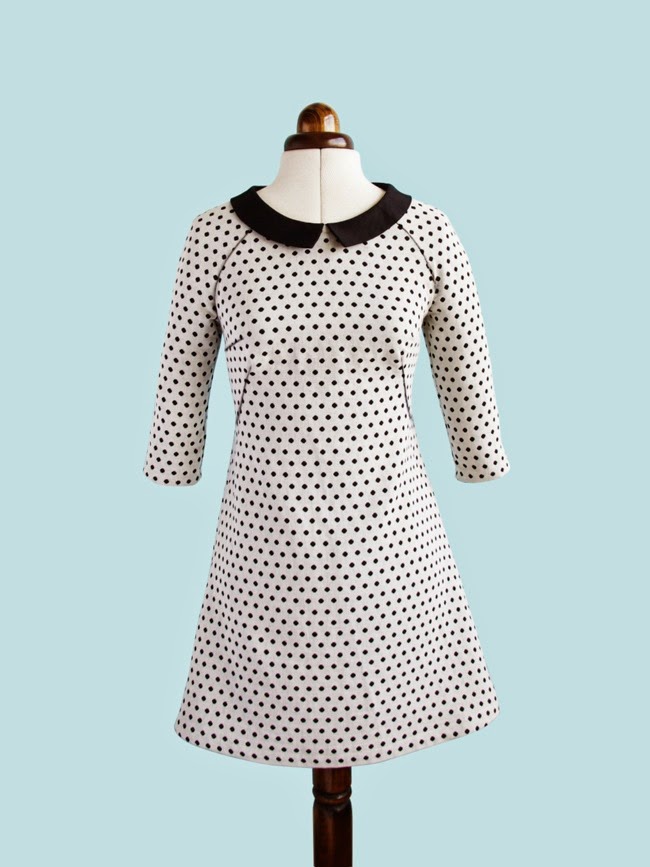
Raglan sleeves are joined to the dress with diagonal seams running from the neckline to the underarm. The raglan sleeves on the Francoise dress are each formed of two pieces, front and back, joined together with a seam line running from the shoulder to the wrist, which adds shaping to the sleeve at the shoulder.
I decided to feature raglan sleeves in this design as they can be sewn to the dress as flat pieces, before sewing the underarm, making them easier to construct than “set-in” sleeves, the kind that are sewn into a tube before being inserted into a round armhole (like on the Megan dress pattern from Love at First Stitch). This makes Francoise a great dress project for beginners. Or, if you’re a more experienced stitcher, it makes it a bit more interesting than a regular shift dress with set-in sleeves. Those seams are just screaming out for some decorative piping or imaginative colour blocking!
Since the sleeves incorporate the shoulder and part of the bodice into them, it’s definitely wise to make a toile (muslin) of the dress before cutting into your nice fabric, as you may need to tweak the pattern fit the unique shape of your shoulders, arms and torso.
Let’s get started. The Francoise dress includes a 15mm (5/8in) seam allowance. Sew with this seam allowance unless the step indicates otherwise.
You should have cut two front sleeve pieces and two back sleeve pieces, and stay stitched the necklines and raglan seam lines. On the raglan seam lines (marked on the pattern) of the front and back sleeves, clip perpendicular snips into each curve between the second and third notches, up to (but not over) the stay stitching line. The reason we do this is, because of the curved shape of the raglan seams, the cutting line is a different length to the stitching line 15mm (5/8in) in – so we need open up the seam allowances so we can match up the stitching lines with those on the dress pieces more accurately.

Lay the front sleeves on top of the front dress at the raglan seam lines, right sides together. Not sure which is the front sleeve? The front sleeve has single notches, the back sleeve has double notches and is wider than the front. Pin them together, matching the shoulders, underarms and notches. Don’t worry if the fabric doesn’t lie flat, it needs to curve for the seam lines to fit together. Stitch along the raglan seam lines using a 15mm (5/8in) seam allowance. Now stitch again using a 10mm (3/8in) seam allowance to reinforce the seam.
Pin and stitch the back sleeves to the back dress pieces in the same way.

Trim the front and back seam allowances. Now you can finish the seams to neaten and strengthen them – either with zigzag stitch on your sewing machine or using an overlocker (serger) if you have one. Press the finished seam allowances up towards the sleeves.
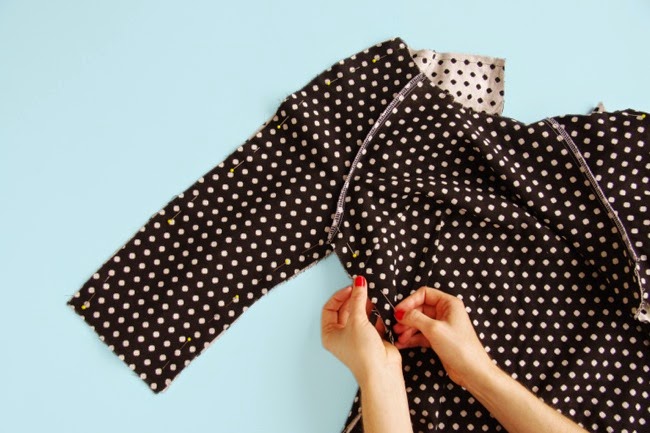
Now we can sew the shoulder seams and side seams of the dress. Lay the front dress on top of the back dress pieces, right sides together. Pin together at the shoulders, underarm seams and side seams, matching notches. Usually I like to insert pins perpendicular to the seams with the heads sticking out, so I can whip them out easily when sewing. This time though, pin parallel to the seams, directly on the stitching line – that way you can try your dress on and adjust the position of the stitching line (marking it with the pins) if you prefer a closer or looser fit. FYI the shoulder seam joining the front and back sleeves is designed to sit 1cm forward of your actual shoulder, so it should just be visible from the front.
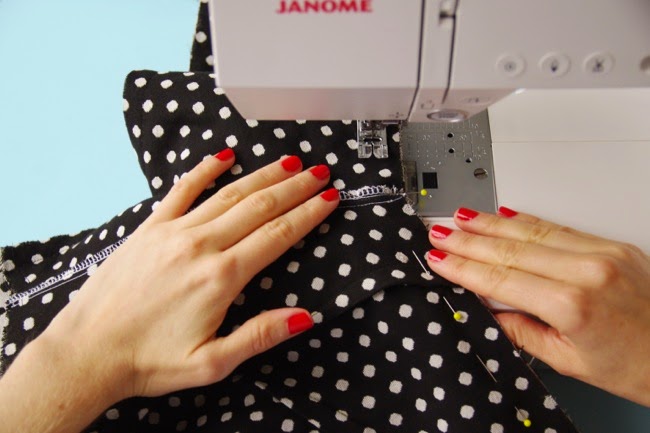
Stitch the front dress to the back dress at the shoulder seams (from the neckline to wrist). Stitch the underarm and side seams in one continuous line from the end of the sleeve to the dress hem, pivoting at the point where the sleeve meets the dress (this is the same way the underarm and side seam of the Coco top or dress is sewn if you’ve made that before). Trim, finish and press the seam allowances either open or towards the back. A sleeve board or rolled up towel will help you press the underarm and shoulder seams inside the sleeve.
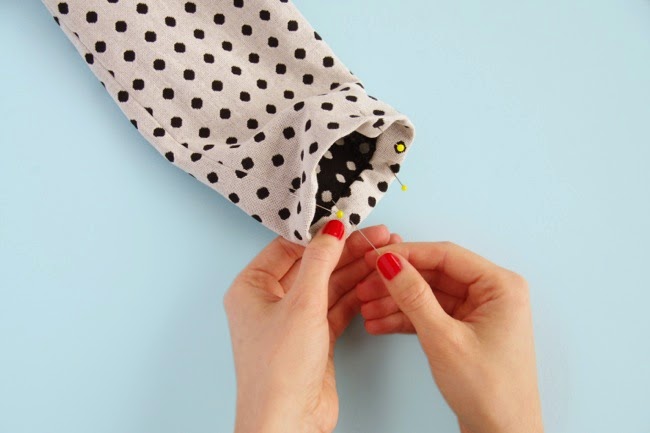
All that’s left to do now is to hem the sleeves. Try on your dress again and check you’re happy with the hem line – there is a 3cm (1 1/4in) hem allowance included. Once you’re happy, take off the dress, fold the hem of each sleeve under 15mm (5/8in) and press. Fold it under another 15mm (5/8in), press again and pin in place with the dress right side out.
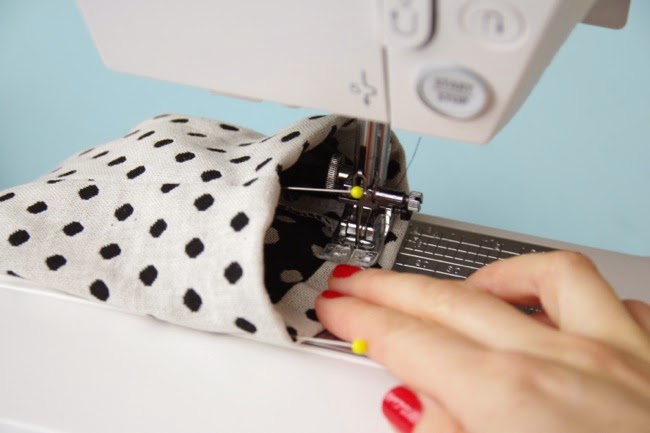
Topstitch each sleeve hem close to the inner fold.
Done!
In the next post we’ll make the optional collar and the neckline facings…

